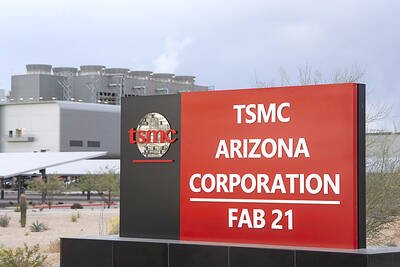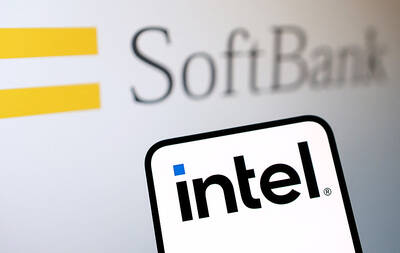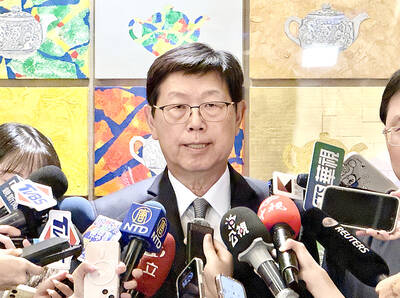Taiwan’s economy, while gradually recovering from the global economic downturn, is expected to show moderate growth this year as export orders, boosted by China’s strong recovery, are expected to rise about 10 percent, experts and officials said on Monday.
They said the country would see positive growth this year, not only because of the low base last year, but also because of some fundamental factors such as strong inventory buildup.
Polaris Research Institute (寶華綜合經濟研究院) president Liang Kuo-yuan (梁國源) said the global economic recovery is mostly led by the Asian emerging economies — particularly China — which will benefit Taiwan’s exports.
With the economic downturn approaching an end, manufacturers have digested most of their inventories, so they need to build up their stocks again, Liang said.
Ray Chou (周雨田), a research fellow at Academia Sinica’s Institute of Economics, said that during periods of economic recovery, manufacturers need to rebuild their inventories while meeting existing orders, so the boosting effects from rebuilding inventories sometimes are underestimated.
Chou said that if the momentum of inventory buildup is strong, the economy would show a better performance than expected this year.
Taiwan is expected to see a negative economic growth rate for last year of 2.53 percent, while the growth rate this year is expected to be 4.39 percent, the Cabinet-level Directorate General of Budget, Accounting and Statistics (DGBAS) said.
While the growth forecasts from private research institutes vary from 4.21 percent to 4.73 percent, the national development plan approved by the Cabinet on Dec. 24 set the target for economic growth this year at 4.8 percent.
Meanwhile, with Asia expected to lead the global economic recovery, and with China — Taiwan’s biggest source of export orders — expected to surpass Japan to become the world’s second-largest economy, Taiwan’s foreign trade will be boosted, trade officials said.
Huang Chih-peng (黃志鵬), director-general of the Bureau of Foreign Trade under the Ministry of Economic Affairs, said that both exports and imports are expected to show 10 percent growth this year.
In addition to orders from China, which will gradually increase as its economy improves, Huang said that more than NT$1 billion (US$31.3 million) in business opportunities from an international sourcing event in March are likely to be realized, which will affect export figures this year.
The US, which is expected to become the second-strongest area of recovery, will see more obvious signs of growth in the second half of this year, trade officials said.
Taiwan’s exports were down 24.1 percent in the first 11 months of last year — which is even larger than the 16.9 percent negative export growth seen during the Internet bubble burst of 2001.
However, export orders in November picked up sharply — rising 37.11 percent from the same month of the previous year — with the total value of orders from China and Hong Kong increasing by 70 percent.
However, as depreciation of the US currency is expected to continue, the New Taiwan dollar will be under more pressure to go up, which will reduce export competitiveness, Huang said. Unemployment would still be an issue, an academic said.

Taiwan Semiconductor Manufacturing Co (TSMC, 台積電), the world’s biggest contract chipmaker, booked its first-ever profit from its Arizona subsidiary in the first half of this year, four years after operations began, a company financial statement showed. Wholly owned by TSMC, the Arizona unit contributed NT$4.52 billion (US$150.1 million) in net profit, compared with a loss of NT$4.34 billion a year earlier, the statement showed. The company attributed the turnaround to strong market demand and high factory utilization. The Arizona unit counts Apple Inc, Nvidia Corp and Advanced Micro Devices Inc among its major customers. The firm’s first fab in Arizona began high-volume production

VOTE OF CONFIDENCE: The Japanese company is adding Intel to an investment portfolio that includes artificial intelligence linchpins Nvidia Corp and TSMC Softbank Group Corp agreed to buy US$2 billion of Intel Corp stock, a surprise deal to shore up a struggling US name while boosting its own chip ambitions. The Japanese company, which is adding Intel to an investment portfolio that includes artificial intelligence (AI) linchpins Nvidia Corp and Taiwan Semiconductor Manufacturing Co (TSMC, 台積電), is to pay US$23 a share — a small discount to Intel’s last close. Shares of the US chipmaker, which would issue new stock to Softbank, surged more than 5 percent in after-hours trading. Softbank’s stock fell as much as 5.4 percent on Tuesday in Tokyo, its

COLLABORATION: Softbank would supply manufacturing gear to the factory, and a joint venture would make AI data center equipment, Young Liu said Hon Hai Precision Industry Co (鴻海精密) would operate a US factory owned by Softbank Group Corp, setting up what is in the running to be the first manufacturing site in the Japanese company’s US$500 billion Stargate venture with OpenAI and Oracle Corp. Softbank is acquiring Hon Hai’s electric-vehicle plant in Ohio, but the Taiwanese company would continue to run the complex after turning it into an artificial intelligence (AI) server production plant, Hon Hai chairman Young Liu (劉揚偉) said yesterday. Softbank would supply manufacturing gear to the factory, and a joint venture between the two companies would make AI data

The Taiwan Automation Intelligence and Robot Show, which is to be held from Wednesday to Saturday at the Taipei Nangang Exhibition Center, would showcase the latest in artificial intelligence (AI)-driven robotics and automation technologies, the organizer said yesterday. The event would highlight applications in smart manufacturing, as well as information and communications technology, the Taiwan Automation Intelligence and Robotics Association said. More than 1,000 companies are to display innovations in semiconductors, electromechanics, industrial automation and intelligent manufacturing, it said in a news release. Visitors can explore automated guided vehicles, 3D machine vision systems and AI-powered applications at the show, along